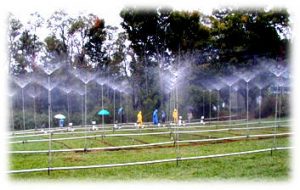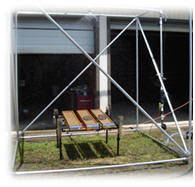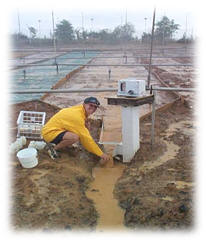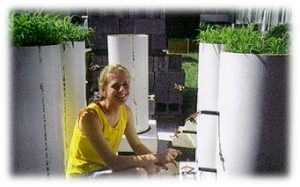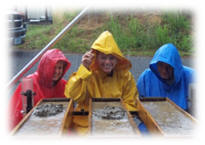Prairie Strips as a strategy for mitigating antimicrobial resistance: 2017-2021
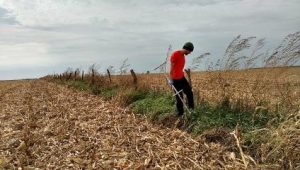
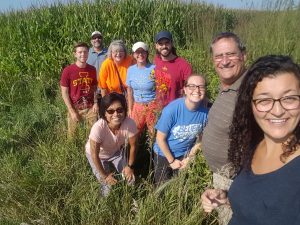
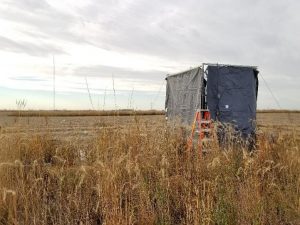
With funding from USDA, we are investigating the impact of prairie strips integrated into crop fields as a strategy to mitigate antimicrobial resistance. The project includes rainfall simulation and flume experiments to assess antibiotic resistant bacteria, antibiotic resistant genes, and antibiotic reductions. This project is a collaboration with USDA ARS and University at Buffalo. Collaborators include Adina Howe, Lisa Shulte-Moore, Matt Helmers, Tom Moorman, Heather Allen, and Diana Aga.
Water quality monitoring and analysis in Black Hawk Lake Watershed: 2014-2019
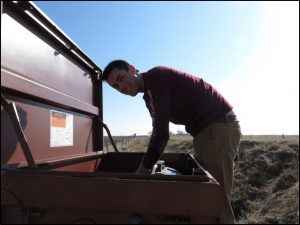
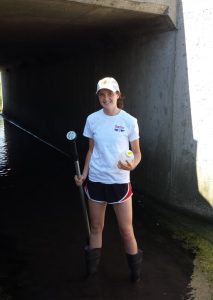
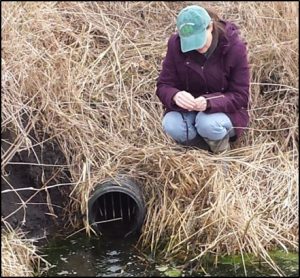
We have been conducting a paired watershed monitoring study in the Black Hawk Lake Watershed since fall 2014. The goal of this project is to answer the question, “Are water quality improvement strategies in the Black Hawk Lake Watershed positively impacting water quality?” Funding: Iowa Department of Natural Resources. Check out the ISU News Release!! With new funding from USDA (led by Adina Howe) we will investigate the impacts of conservation practices on reducing AMR bacteria and genes. Below is a picture of Tim Neher collecting weekly grab samples for bacteria.
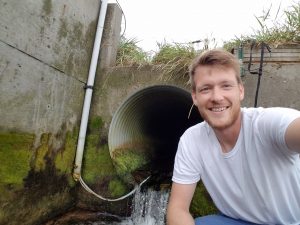
Experimental woodchip bioreactor installation and study: 2013 – present
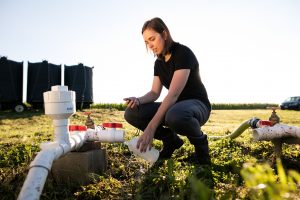
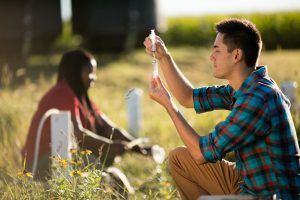
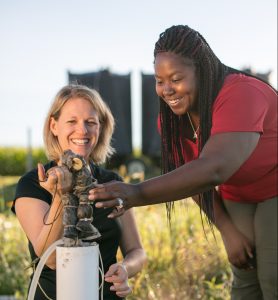
We installed nine pilot scale woodchip bioreactors at the Agricultural Engineering Research Farm near Ames, Iowa. These experimental bioreactors can be used to test nutrient removal from bioreactors designed with varying hydraulic retention times or receiving varying influent nutrient concentrations. In 2018 we will be replacing some of the woodchips with corn cobs. This project is a collaboration with Tom Moorman, Morgan Davis, and Tom Isenhart and is funded by the Iowa Nutrient Reduction Center.
SmartPath: Grower-directed convergence of nanotechnology and smart decision analytics for irrigation water quality management related to pathogens
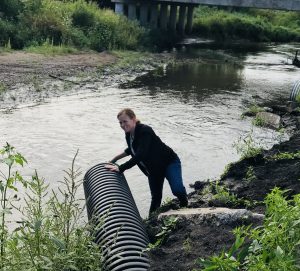
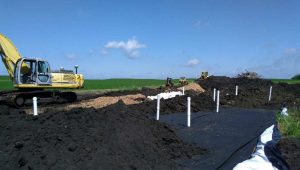
A new project led by researchers at the University of Florida will investigate new strategies to treat irrigation water and prevent pathogen contamination of food systems. In Iowa we will evaluate woodchip bioreactors as a test system for treatment using the newly installed bioreactor at ISU’s Uthe farm. The project also includes pathogen sensing and software development in collaboration with Drs. Gomes and Winer in Mechanical Engineering at ISU. Check out the ISU announcement about this project!
Impact of laying hen manure application on water quality under continuous corn: Part II
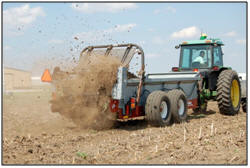
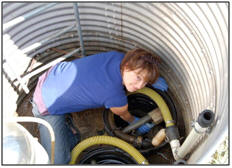
This project is a continuation of a 12-year study to test tile water from field plots receiving laying hen manure for nitrate and dissolved reactive phosphorous concentrations. New work will investigate microbial export from corn plots amended with poultry manure in the fall. This project is sponsored by the Iowa Egg Council and is a collaboration with Drs. Andersen and Kanwar.
Monitoring and Assessment of Closed Depressions in the Des Moines Lobe: 2014-present
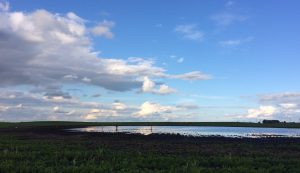
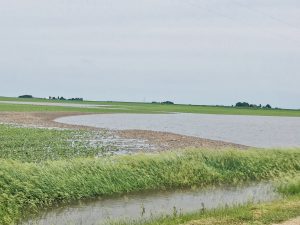
In this project we are monitoring the frequency, duration and extent of ponding in several monitored prairie pothole wetlands and using this data to develop an empirical tool for assessing pothole hydrology and connectivity to downstream waterbodies. The pothole projects are a collaboration with Drs. Amy Kaleita , Steven Hall, AndyVanloocke, and Emily Heaton and are funded by Iowa DNR, EPA Region 7, Leopold Center for Sustainable Agriculture, and the Iowa Nutrient Reduction Center. Check out our Pothole Project Webpage and ISU’s press release on our new project! The new work is funded by USDA and will investigate how well miscanthus, a bioenergy crop, grows in potholes. Photo credit: Nate Lawrence
Metagenomic analysis and modeling of environmental resistance to agricultural antibiotics: 2015-2019
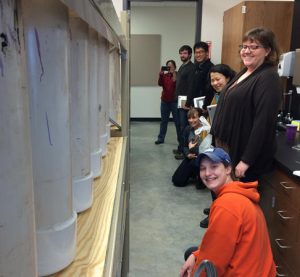
The goal of this project is to study the vertical transport of antibiotics, antibiotic-resistant bacteria and antibiotic resistance genes at the lab scale. We are establishing soil columns and will analyze manure, soil, and water samples for a suite of resistant genes using novel metagenomic tools. This effort is a collaboration with Iowa State University (Adina Howe), the USDA (Heather Allen and Tom Moorman), and Grinnell College (Shannon Hinsa). Funding: CHEEC, USDA Check out the ISU News Release!!
Persistence and Transport of Veterinary Antibiotics and Antibiotic-Resistant Bacteria in Midwestern Farming Systems: 2012-2017
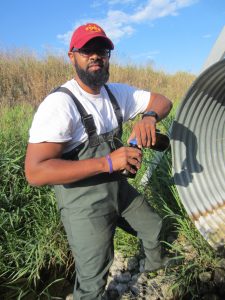
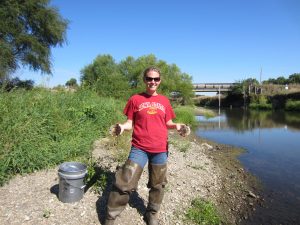
The goal of this project is to study the occurrence and transport of antibiotics, antibiotic-resistant bacteria and antibiotic resistance genes in tile-drained agricultural fields that have received multi-year application of swine, poultry, or beef manure. We will conduct column simulation experiments and model antibiotic transport using RZWQM. This project is a collaboration with Tom Moorman (USDA ARS) and is funded by the USDA NIFA AFRI.
Effect of Manure Application Timing and Management on the Persistence and Transport of Antibiotics and Antibiotic-Resistant Bacteria in Corn and Soybean Production Systems: 2016-2019
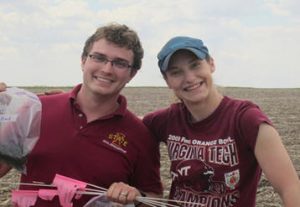
The goal of this project is to inform pork producers of in-field and manure management practices that can be applied to reduce the transport of antibiotics, antibiotic-resistant bacteria and antibiotic resistance genes to surface waters. We are conducting experiments in the lab and collecting samples at ISU’s Nashua Research Farm. This effort is a collaboration with Iowa State University (Adina Howe and Dan Anderson) and USDA (Tom Moorman). Funding: National Pork Board
Drainage water quality from manure-treated soybean crops: Assessment of woodchip bioreactors for edge-of-field treatment: 2013-2018
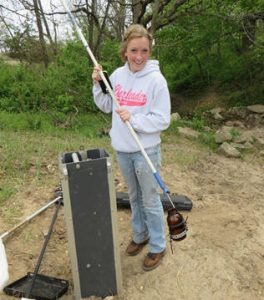
In collaboration with the Iowa Soybean Association we are collecting water samples from installed bioreactors to assess nutrient and fecal indicator bacterial removal. We are also using column bioreactors to test nutrient and bacteria removal during a range of hydraulic retention times, fill materials, and temperatures.
Bio-electrical augmentation of woodchip bioreactors for enhanced nitrate removal: 2015-2017
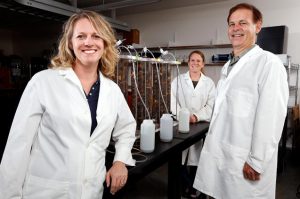
We are studying the impacts of electrical stimulation on denitrifying bacteria and nitrate removal in woodchip bioreactors. Experiments are being conducted in temperature controlled chambers at the USDA ARS National Lab for Agriculture and the Environment in Ames. If successful we plan to pilot this system in the field. This project is a collaboration with Tom Moorman (USDA ARS) and Raj Raman and is funded by the Iowa Soybean Association. Check out the article on our woodchip bioreactor work in Impact Magazine (Vol 9 No 2 2015)!
Simple and fast detection of pathogens in recreational waters: 2014-2016
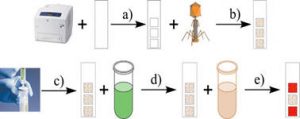
The objective of this project is to develop a simple dip-stick type test for the detection of fecal indicator bacteria (E. coli) and Salmonellain recreational waters. We are using bacteriophages bound to paper to colorimetrically and cheaply detect bacteria in water samples. We will test our method at recreational beaches in Iowa in collaboration with the Iowa Department of Natural Resources. This project is a collaboration with Dr. Rebecca Cademartiri (Chemical and Biological Engineering ISU). Funding: LCSA, CHEEC, WERF
Genetic and environmental factors driving E. coli attachment to particles in streams: 2012-2016
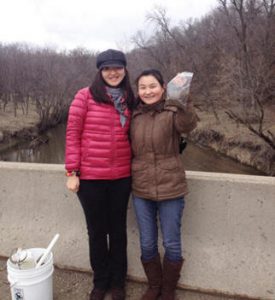
In this project we studied the impacts of surface proteins and exopolymeric substances (EPS) on E. coli attachment to particles; identified the genes enabling expression of these features; compared attachment among strains; and assessed the mechanisms of attachment to model and stream particulates. We also developed learning modules for environmental sciences middle school students in Des Moines. This project was a collaboration with Drs. Laura Jarboe and Michael Thompson and was funded by the National Science Foundation. Bacteria in your watershed – Middle School Activity
Evaluation of pothole wetland impacts on downstream water quantity and quality, and analysis of tile drain management as a potential tool for water resource protection using SWAT: 2012-2013
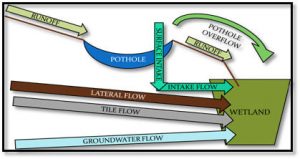
We tested the pothole functions in the Soil and Water Assessment Tool in the Lyons Creek watershed which is in the Boone River Basin and assessed the impacts on downstream hydrology and water quality. Funded by: Agriculture’s Clean Water Alliance
Occurrence and Movement of Antibiotics, Antibiotic Resistant Bacteria and Resistance Genes in Tile-Drained Agricultural Fields Receiving Swine Manure Application: 2012-2015
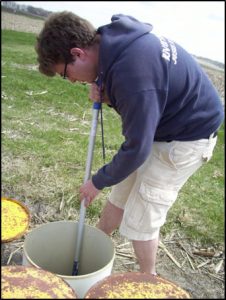
The goal of this project was to further understanding of the occurrence and transport of antibiotics, antibiotic-resistant bacteria and antibiotic resistance genes in tile-drained agricultural fields that have received multi-year application of liquid swine manure through injection. We will test the occurrence in soils collected from no-till and chisel plow fields and the transport into tile drainage systems. We also examined gene transfer and contaminant concentrations in the South Fork Watershed. Funded by the National Pork Board Check out the ISU News Release!!
Sequence analysis of transferable genes encoding bacterial attachment and multi-drug resistance: 2012-2013
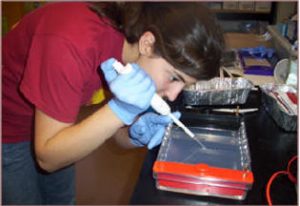
This project examined potential relationships between genes in E. coli encoding attachment to particles and antibiotic resistance genes; and the possibility that they are found on a common mobile genetic element. We also explored the possibility of virulence genes and the potential threat to human health through environmental exposure. This project was a collaboration with Drs. Laura Jarboe, Lisa Nolan and Cathy Logue and was funded by CHEEC.
Investigation of bacteria transport and resistance mechanisms and implications for water quality from confinement swine and beef grazing production systems in Iowa: 2012-2015
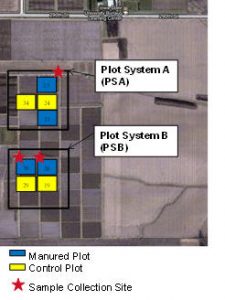
This study combined the long term nutrient monitoring study at Nashua, Iowa with new monitoring of bacteria transport and phenotypic resistance to human and veterinary antibiotics. We also investigated the mechanisms of E. coli and manure particle interactions to better inform the selection of management practices to prevent bacteria transport to surface waters. PIs: Michelle Soupir, Matt Helmers, Michael Thompson, Laura Jarboe, R. Kanwar, A. Mallarino, funded by Leopold Center for Sustainable Agriculture
Hickory Grove Lake Watershed Management Plan
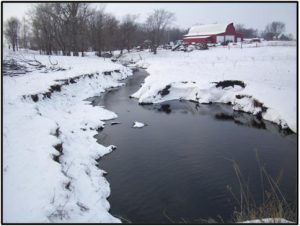
Hickory Grove Lake is experiencing event-driven water quality problems. In general, the watershed is 85% row crop and has very few elevation changes, and much of the agricultural land is under tile drainage management. Storm related surface runoff has led to gully erosion, debris, and nitrogen spikes immediately after these events. We monitored the water quality and flow into and out of the lake, modeled the watershed with SWAT, and engaged stakeholders in the water quality improvement process. This project was a collaboration with Dr. Matt Helmers and Dr. Alok Bhandari and was funded by Iowa DNR.
Occurrence and Movement of Antibiotic Resistant Bacteria and Resistance Genes in Tile-Drained Agricultural Fields Receiving Swine Manure Application
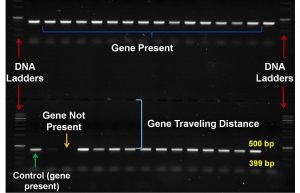
The goal of this project was further understanding of the occurrence and transport of antibiotic-resistant bacteria and antibiotic resistance genes in tile-drained agricultural fields that have received multi-year application of liquid swine manure through injection. We tested the occurrence in soils collected from no-till and chisel plow fields and the transport into tile drainage systems.
Improving a Watershed Scale Model to Integrate Wetlands into Watershed Planning
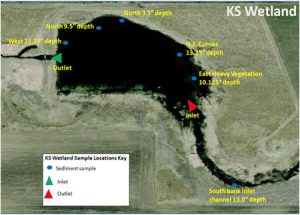
The goal of this project was to increase and improve wetland protection and restoration efforts by developing a tool to integrate wetland protection efforts into watershed plans designed to improve water quality. We improved the wetland hydrologic and water quality processes in SWAT. This project was a collaboration with Drs. Bill Crumpton, Phil Gassman, and Matt Helmers and was funded by U.S. EPA Region 7.
NSF Research Experience for Undergraduates Site: Sustainable Production and Processing for Biomass-Derived Fuels of the Future.
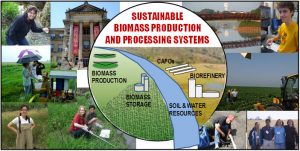
Improving SWAT for developing TMDLs for bacteria
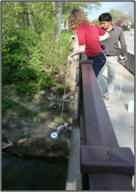
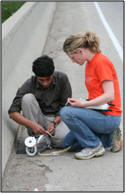
This project improved modeling of in-stream bacteria fate and transport processes by incorporating bacteria resuspension into the Soil and Water Assessment Tool (SWAT). It was a collaboration with Dr. Chris Rehmann and was funded by U.S. EPA Region 7.
Resuspension of E. coli in sediment laden streams
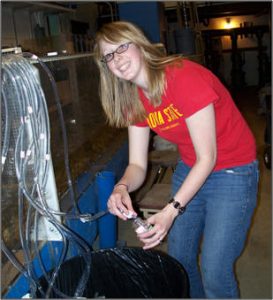
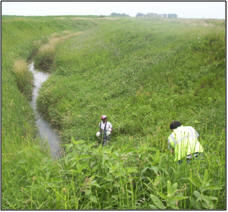
This project involved laboratory experiments to measure resuspension of E. coli from a sediment bed, development of equations to predict the process, and field experiments in Squaw Creek to test the resuspension relationships developed from the laboratory results. Funding: National Science Foundation
Release and resuspension of direct fecal deposits in streams
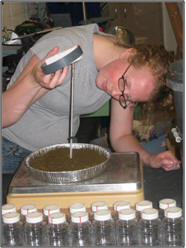
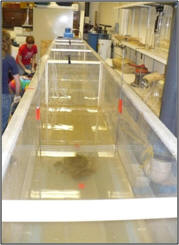
Direct fecal deposits from cattle allowed access to streams can be a leading cause of E. coli pollution in agricultural watersheds. Microorganisms in the cowpats can survive in stream sediments for extended periods of time and are resuspended during high flows. We used a flume to study the resuspension of E. coli into the water column.
Transport of tylosin resistant bacteria through macropores

The transport of antibiotic resistant enterococci and E. coli into tile lines below no-till and chisel plow field plots was examined following swine manure applications in November 2009 and April 2010.
Escherichia coli transport, resistance, and virulence factors from land applied swine slurry
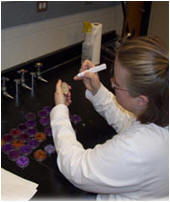
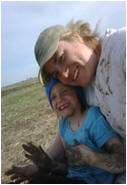
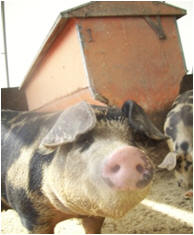
E. coli collected from swine manure are being examined for attachment to soil and resistance to antibiotics, including tylosin, erythomycin, ampicillan, and chloramphenicol. Relationships between antibiotic resistance and attachment mechanisms were investigated.
